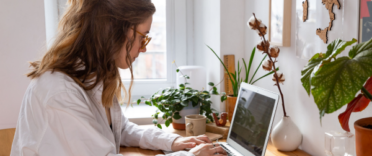 Here are some of the best £1,000 loan rates in the UK for you to consider, along with some additional information on how personal loans work. The figures in our table in this article are based on the representative example of repaying a £1,000 loan over three years. In some cases you may be offered a different loan amount or a different rate, depending on your credit history, your financial circumstances and how long you want to repay the money. Keep in mind that applying for several loans in a short space of time can damage your credit score and make it harder to borrow money in the future.
Here are some of the best £1,000 loan rates in the UK for you to consider, along with some additional information on how personal loans work. The figures in our table in this article are based on the representative example of repaying a £1,000 loan over three years. In some cases you may be offered a different loan amount or a different rate, depending on your credit history, your financial circumstances and how long you want to repay the money. Keep in mind that applying for several loans in a short space of time can damage your credit score and make it harder to borrow money in the future.
Compare loan deals
We’ve teamed up with Creditec
- Check your eligibility for a loan before you apply
- No effect to your credit score
- Representative 26.9% APR
- Simple to use

What is the best loan for £1,000?
Try to compare as many different loan deals as possible to find the best personal loan for you. The representative APR is an indication of the cheapest deal, but it will not necessarily be the right option for you. Read our article ‘What is representative APR?’ for more information. By looking through a range of lenders you can get an idea of what is available. You may find that one lender offers a good interest rate, but not the term length you want. Another could have the right term length available, but not the full £1,000 you were hoping for. A good comparison should help you find a deal that ticks as many boxes as possible.
Once you find the best £1,000 loan deal for you, try not to rush into an application. First, take a look at the eligibility criteria. Some lenders even have an online eligibility checker you can use to see how likely you are to be successful. By checking this before you apply, you can limit the rejections appearing on your credit file. Too many credit applications in a short period will give the impression that you are struggling for money and not managing your finances well, which could make it harder to get credit in the future.
If you need more information on the basics of a loan, read our article ‘What is an unsecured loan?’.
How to find the best loan for you
We have teamed up with Creditec* to make it easier for you to compare loan deals and check your eligibility. In minutes, without affecting your credit score, if you are eligible, you will be able to find out which loans you are most likely to be accepted for. You can then tailor your personalised list to sort deals by the features that matter most to you. This could mean filtering for the loan term you want, sorting the list by the rate of interest or highlighting the loans you are most likely to be successful in applying for. All this is done through a soft credit check, so your credit score will not be affected. Click on this link to get started*. If you are not eligible for a loan with any of the providers on the panel then you may be shown a variety of alternative products that may be suitable for you. You are under no obligation to continue with them if you feel they are not suitable for your circumstances.
The best rates on a £1,000 loan – January 2025
| Loan provider | Representative APR (from) | Available loan term | Available loan amount | Monthly payment |
Eligibility checker? |
| Santander | 13.5% | 1 - 5 years | £1,000 - £25,000 | £33.56 | No |
| M&S Bank | 14.9% | 1 - 7 years | £1,000 - £25,000 | £34.16 | Yes |
| AIB (NI)¹ | 16.4% | 1 - 5 years | £1,000 - £25,000 | £35.01 | No |
| HSBC | 16.9% | 1 - 5 years | £1,000 - £25,000 | £35.02 | No |
| Zopa | 22.9% | 1 - 5 years | £1,000 - £25,000 | £37.57 | Yes |
| TSB | 27.9% | 1 - 7 years | £300 - £50,000 | £39.69 | No |
| Halifax | 29.7% | 1 - 7 years | £1,000 - £50,000 | £40.44 | Yes |
Representative APR is based on a 3-year loan term
¹You must be an existing personal current account customer with AIB (NI) and registered for Online Services
How a £1,000 loan works
A £1,000 personal loan involves borrowing money from a provider and then repaying the debt in equal monthly instalments, with interest, over an agreed period of time. It is a form of unsecured borrowing because you do not need to use your home, car or any other valuable asset as security. This means you may also see it referred to as an unsecured loan. Read our article ‘Secured vs unsecured loans: Which is best for me?’ to learn which loan type would suit you best.
You can apply for a £1,000 loan online, over the phone or in person at a high-street bank branch. In most cases, you will need to prove that you are a UK resident and over the age of 18.
If your loan application is approved, you will need to pay the money back over the loan period. Your lender will have told you how much you need to pay back each month as a part of the application process. What you owe will also start to grow with interest. You can pay more than the minimum amount in order to try and clear your debt more quickly, but some lenders will charge a fee. Any loan fees you have to pay should be made clear by the lender before you sign up.
Can I get a £1,000 loan with no credit check?
No, a lender will conduct a credit check and an affordability check. This is when the lender decides if you are a trustworthy borrower and if you can afford the monthly repayments. Some applicants will be rejected, often because the lender decides that there is too great a risk of the repayments not being paid on time. You can avoid unnecessary rejections by keeping track of your credit score and checking your eligibility for a loan online without completing a full application. Find out how to check your score by reading our article ‘The best way to check your credit score for free’ and see what you can do to improve it by reading ‘How to improve your credit score quickly’.
Fortunately, it is possible to get a loan even if you have a low credit score. However, you may need to temper your expectations, as the loan amount, interest rate and loan term you are offered may not be what you had hoped for. This means that overall, a bad credit loan will likely be more expensive than a standard loan. Read our article ‘How can I get a loan with poor credit?’ to learn more.
The key figures in a £1,000 loan
Here are the crucial numbers when you compare £1,000 loans:
- Loan amount - Even if you apply for a £1,000 loan, you may be able to borrow as much as £25,000 or more.
- Loan term - You will usually have up to seven years to repay your loan, but some lenders will offer longer terms and others will limit the term depending on the amount borrowed.
- Loan fees - Fees will vary from lender to lender and can depend on what you intend to use the money for and when you pay it back.
- APR (annual percentage rate) - This is the annual rate that is used to help you work out the cost of borrowing money. It takes into account the interest you are being charged as well as any other fees that are applicable.
- Representative APR (annual percentage rate) - This is the rate that a lender expects at least 51% of successful applicants to be offered. You may be charged more or less than this figure, but it can be a good tool to compare providers.
- Early repayment charge - This is a percentage figure that some lenders will charge if you decide to clear your debt before the end of the loan term. The rules are slightly different if you took out a loan prior to February 2011, however, there should be no charge for paying off up to £8,000. For loans over £8,000, lenders can charge up to 1% of the amount that was repaid early, or 0.5% if you are in the final year of the repayment period.
You should also think about your credit score. Your credit score is an assessment of how trustworthy a borrower you are. A low credit score may mean your loan application will be rejected, while a high score suggests you could be offered the lender’s best rates.
How much will a £1,000 loan cost?
A £1,000 loan repaid over three years at a rate of 13.5% APR will cost £1,208.16 in total. This will mean a monthly repayment of £33.56 a month for 36 months. Stretching out the loan term will reduce the monthly payments, but it will make the overall cost greater. This is because there will be more time for the debt to grow with interest. Shortening the loan term will mean you pay less interest, but the monthly payments will go up. It is important to make sure you can afford to pay the monthly repayments in full and on time.
What can I use a £1,000 loan for?
A lender will usually ask you to state what you intend to spend the money on as part of the loan application process. Some common reasons to get a personal loan include:
- A wedding
- A car
- Home improvements
- Debt consolidation
- A holiday
What can't I use a £1,000 loan for?
While you are free to use a personal loan for almost any purpose, there are a few important exceptions. Most lenders will reject your application automatically if you intend to use the the money for:
- Gambling
- Illegal activity
- Buying shares
- A deposit for a property
Some lenders may also reject applicants borrowing for business purposes. You can find out more about specialist business loans in our article ‘What is a business loan?’.
Pros and cons of a £1,000 loan
Take a look at these advantages and disadvantages of a personal loan to work out if it is the right option for you.
Pros of a £1,000 loan
- Spread the cost of a purchase
- Borrow at a lower long-term interest rate than most credit cards
- Stability of fixed monthly repayments
- Less risk to your assets compared to a secured loan
- Widely available
- Can be repaid early in most cases (though sometimes for a cost)
- Applications can be approved and money paid out relatively quickly
Cons of a £1,000 loan
- No interest-free period
- Can be difficult to borrow a small sum at an affordable rate
- Missing repayments or failed applications can damage your credit score
- Difficult to get the best interest rate with bad credit
Alternatives to a £1,000 loan
Even the best £1,000 loan may not be the right option for you. There are a lot of ways to borrow money and spread the cost of certain expenses. Here are some alternatives you could consider.
- Credit card - The obvious alternative to a £1,000 loan. A credit card is a much more flexible way of borrowing money compared to taking out a loan. You only pay back what you spend and you can take advantage of limited-time 0% interest options too. Check out our article ‘Best credit cards in the UK’ for more information.
- Secured loan - You will need to use your home, car or other valuable assets as security, but you may be able to access much higher loan amounts and lower interest rates. £1,000 may be too low an amount for many secured loan lenders. Read our article ‘What is a secured loan?’ to learn more. We also have information on secured loan deals in our 'The best secured loans' article.
- Remortgaging - This is a common way to access cash for home improvements and involves increasing what you owe on your current mortgage. We have more details in our article ‘Remortgage to release equity from your home’.
- Car finance - If you plan to take out a £1,000 loan to pay for a new car, you may find that specialist car finance is an easier option. Read our article ‘Buying a car: what are the best finance options?’ to find out more.
If a link has an * beside it this means that it is an affiliated link. If you go via the link Money to the Masses may receive a small fee which helps keep Money to the Masses free to use. But as you can clearly see this has in no way influenced this independent and balanced review of the product.




